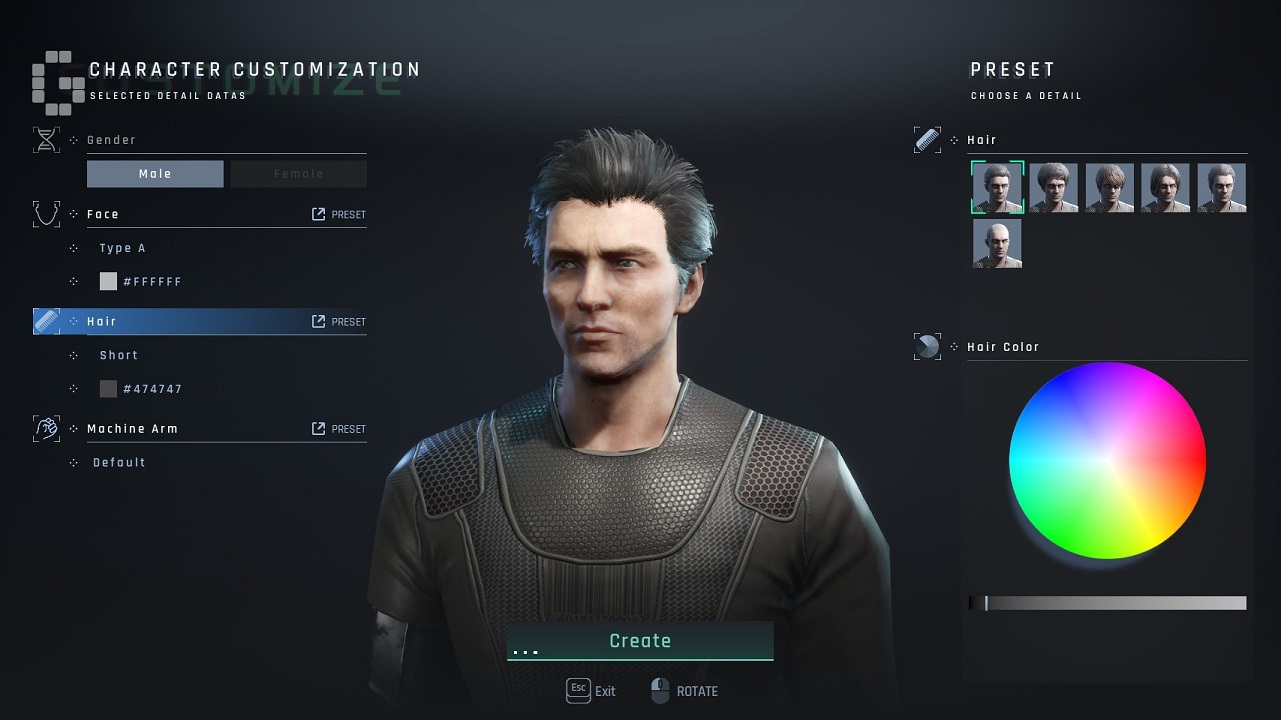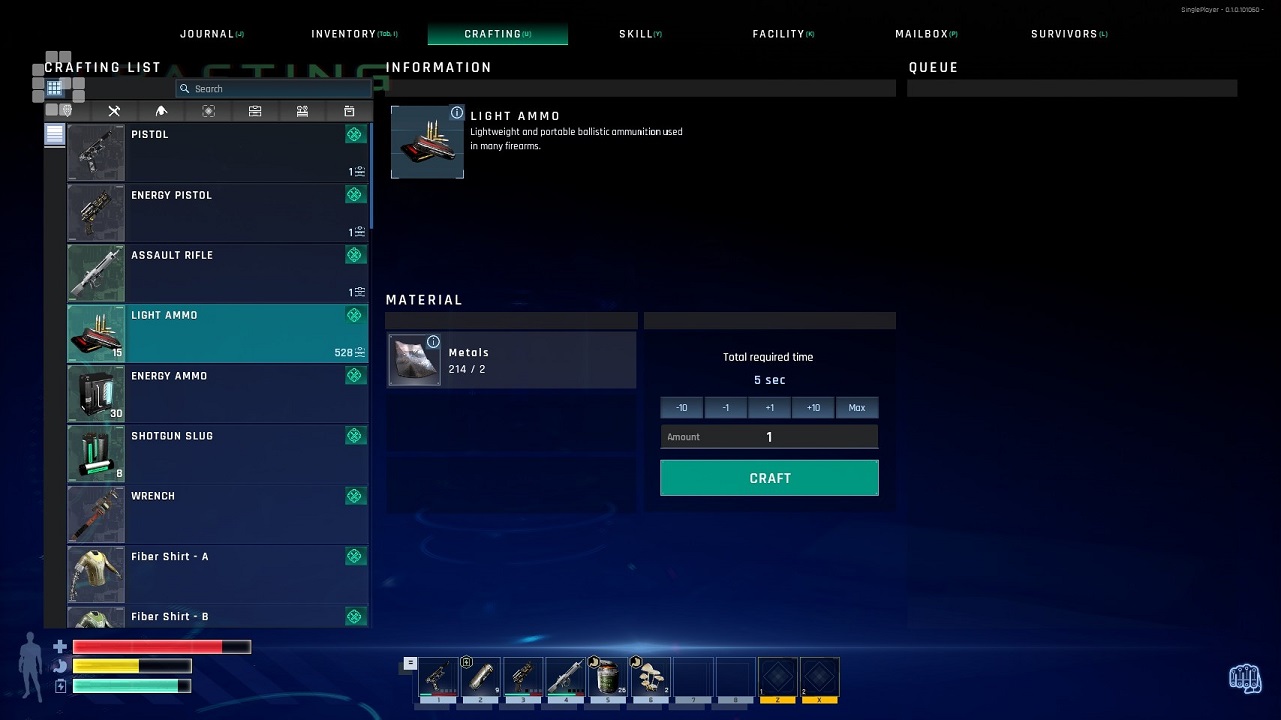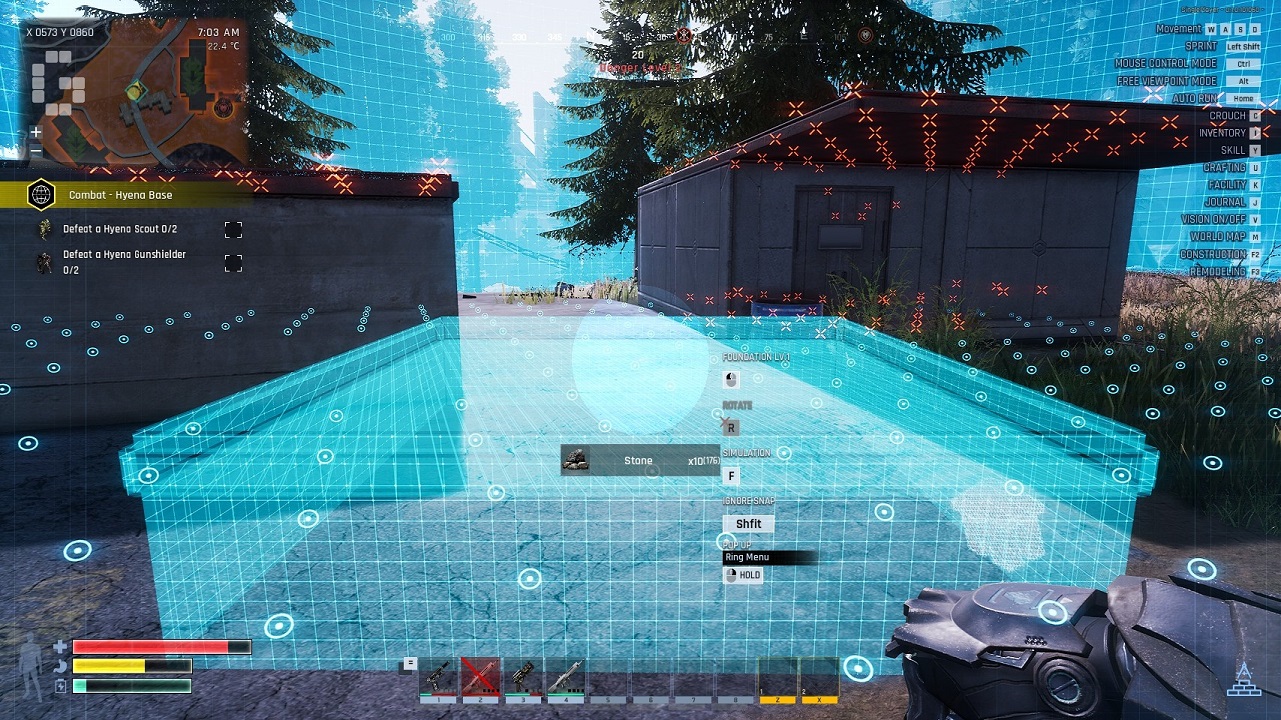Dysterra is, as it describes itself, a “Sci-Fi based FPS survival game where the players cooperate with/compete against each other on a destroyed Earth”. A number of you may have already gotten in to a playtest build, which as you might expect, has Jank due to it being an early build. Keep that in mind moving forward, for this early impressions.

At its core, it plays much like other survival FPS games where you get dropped in some random starting location from which you venture out to find crafting materials, and also gun fights.
DO WE ALL LOOK THE SAME?
Dysterra leans into that futuristic look to keep to its sci-fi theme. It can stand to look more varied, as many of the buildings have similar appearances and layout. The sound effects need more polish too, as the cues don’t quite seem to match and can be confusing. Character customization is presently very limited, offering only a few face presets and different colours for your Machine Arms.

IT’S A-ME, PERCENTAGES
For now, there are only three different stats to take note of: Health, Satiety (Hunger) and Battery, so there’s less micro-managing. When your Health falls to 0, you die. Satiety is roughly a stamina bar, with every action consuming a variable amount. The Battery is related to use of the Machine Arm.
Then, you have the skill trees. Skill points can be obtained simply by playing the game, gathering or killing enemies. The two currently available major skill trees divide further into a total of five sub-branches:
- Survival: Breaks into Recovery, Exploring and Special Ability branches. These skills are related to map exploration and combat.
- Resources: Breaks into Gathering and Construction. As the names suggest, these are for your resource gathering and structure building.
Much like its aesthetics and sound effects, Dysterra‘s skill system needs more work when all they do is Make Number Change by Percentages. The Special Ability sub-branch unlocks Three extra things, and it’s back to the numbers game.

Since this is a survival multiplayer game, sooner or later you’d probably end up dying. You will lose everything except the three items you have in specific Secured slots, so be sure to put the things you really want in there.
Bleeding, Radiation and Fracture are status effects that can afflict you. It’s hard to tell if they scale differently if you’re in an early game area, but at least Bleeding seems to barely do anything.
IT’S NO RUST
Just pick up everything you can since they all have their own use. It’ll suck if you’re missing that one thing, after all. Terrasite and Metals are especially required.
Terrasite is for crafting batteries, recovery items, cooking, fuel, electricity, the list practically goes on. Metals are mainly for weaponry, and you’d want to be armed when you’re out in the open. That said, resources are also quite abundant, as everything will respawn after some time in your immediate vicinity. Hoarding until you are 2000% prepared is an option if not particularly practical.

Exploration is certainly a gameplay loop, but it can feel tedious due to how repetitive its design is. Enemy variety is minimal until you get further into the game. For food, only elk and bear can be hunted down, with two variations each. Certain areas have level recommendations, which don’t seem very impactful at this stage. The Machine Arm is meant to help you find and gather things, which is where the Battery comes in. Vision Scan is a function to help you locate materials, depleting the bar as you proceed.
BOB THE FUTURE BUILDER
Craft things either impromptu or getting to your workbench for all the other options. All your exploration supplies can be done extremely conveniently without needing the workbench, and the game allowing you to select your chosen item, its quantity and you can leave the crafting menu as it hums along in the background. The completed products will be automatically deposited in your inventory and where relevant – like weapons or consumables – will enter an empty Quick Slot.

F2 lets you start the building process through a wheel menu. You will need a foundation first before everything else, raising it if you need to before you proceed with having an actual construction. Your humble hut will need a Building Core stuffed with Terrasite to ensure it doesn’t degrade, and a Power Board to get the electricity running. Building Cores cannot be placed too near each other, even if they happen to be your own.

SHOOTY?
A server is supposed to have 100 players but perhaps the size of the map even in a populated server meant I couldn’t get a PVP taste going. The systems are functional and do what they should, that there’s plenty yet they can improve on.

You can encounter robots which are sitting down and can be attacked. Thing is, they are only vulnerable once they fully stand up, which on one hand, seems fair, but on the other, this is a survival game and staying too long in one spot could be detrimental.
NOT YET LIKE DYS
On the MSI Crosshair 15, there were some dropped frames. For reference, the minimum requirements list a 6-core CPU. Needless to say, optimization has to be on their to-do.
Dysterra has some things going for it: convenient crafting, easy building, and a pretty okay survival game as a base. Things requiring polish almost run the whole gamut: audio, environmental design, more meaningful skills, and the like, which they can hopefully figure out following this playtest.
Here’s to hoping they’ll be able to implement the changes to make it even better.












![[LEVEL UP KL 24] From Development to Quality Assurance: How AI is Transforming the Gaming Industry, According to Microsoft’s Jun Shimoda](https://cdn.gamerbraves.com/2024/12/Jun-Shimoda_Interview_FI-360x180.jpg)








![[CF 2024] Bringing Darkness to Light: Solo Leveling’s Taito Ban on Voicing Sung Jin-woo](https://cdn.gamerbraves.com/2025/01/Taito-Ban_Interview_FI-350x250.jpg)





